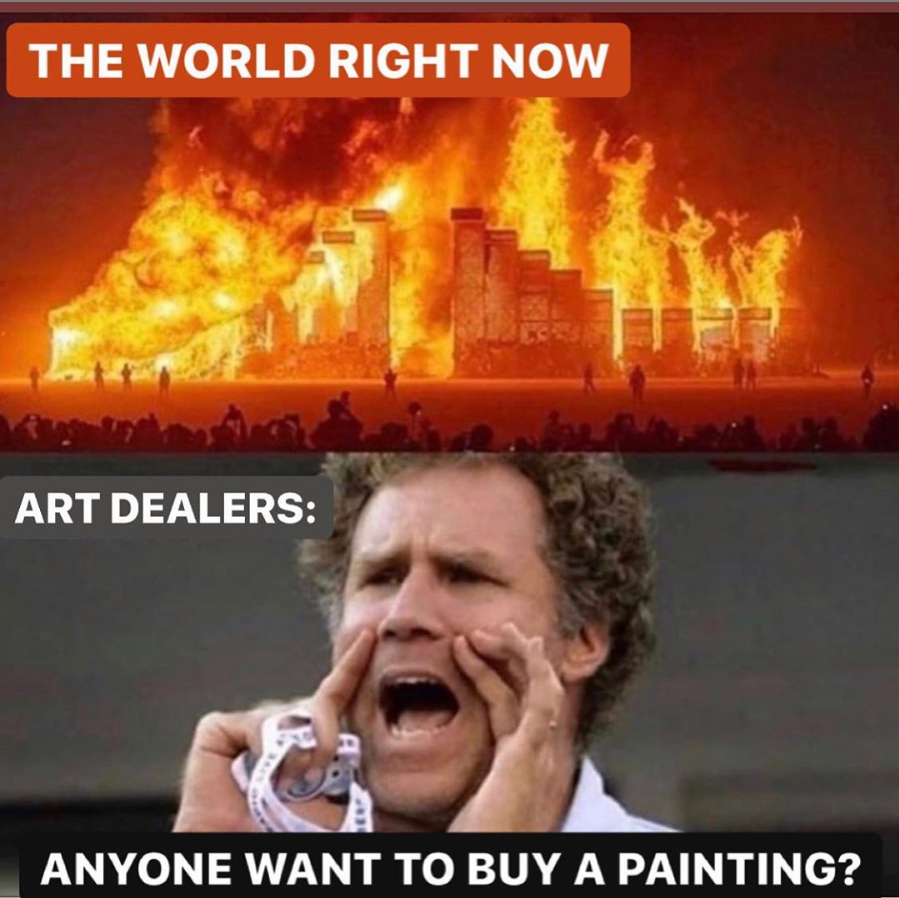[ad_1]
Yesterday Hilde Lyn Helphenstein, better known by her nom de ‘gram, @jerrygogosian, joined me on Instagram Live for a conversation about using memes to cut through the art world’s vanity fair. She started her popular account while bed-ridden, not expecting it to garner a big following. Helphenstein has used her platform to expose the mechanisms of the art market and speak out about sexism and racism built into the business.
“A meme is an easy way to tell a complicated story,” Helphenstein said. By stripping away the gallery world’s chic veneer, she believes, we can refocus on art itself, and on creating more equitable relationships around it. Unfortunately, our conversation got interrupted by connectivity issues, so on our IGTV channel the interview is divided into parts one, two, and three. Next week I’ll be talking to curator and designer Prem Krishnamurthy about Commune, a recent series of talks he organized to research the design of online communities.
A number of startups have come and gone, hyping blockchain as a solution to the art-market’s clubby opacity. This week I read an interview with a founder, saying the same things as those who came before him, while insisting his cryptocoin is different—that it really has the potential to be adopted at the scale necessary to create systemic change. Foundation is another startup introducing crypto to the art market, but its approach really does feel different. Rather than aiming to revolutionize the art world wholesale, Foundation is cultivating an alternative by recruiting artists and designers to release limited-edition goods on its sales platform, where prices automatically adjust to demand, and creators can profit from resale along with collectors. “Our vision is to get artists paid, and offer incentives to the people who support their work,” says a statement on Foundation’s site. They have announced an open call for artists whose work plays with the notion of value. The main objective of this initiative, it seems, is to broaden the company’s talent base; to apply, artists must a set up their own store on Foundation’s exchange. Winners of the open call will get support to promote and sell their works.
Barbara London started a video art collection at New York’s Museum of Modern Art in the mid-1970s, when it was still rare for an institution to have such a program. Now she’s taking on a new medium: the podcast. “Barbara London Calling” features the esteemed curator in conversation with media artists. Hosting interviews takes practice, as I know from doing chats on IG Live, and London’s delivery sounds a little wooden, as if she’s reading a script. But she lets her guests do most of the talking, and the ones in the first two episodes, which dropped Wednesday, speak animatedly: Anri Sala on music as a vehicle for the migration and meeting of cultural forms, and Zina Saro-Wiwa on Nollywood, the importance of rhythm to video art, and her issues with identity politics. More episodes will be released through the end of the year, with guests including Cao Fei, Rachel Rossin, and Samson Young.
For more criticism, news, and links, subscribe to The Program, our weekly email newsletter on art and technology.
[ad_2]
Source link


